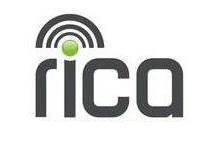 The role of a telephone receptionist has evolved significantly over the years, even more so in the past six months, and will continue to do so.
The role of a telephone receptionist has evolved significantly over the years, even more so in the past six months, and will continue to do so.
A telephone receptionist is the first contact point for customers who call into your company. They are responsible for understanding the customer's needs and directing them to the department to fulfil that need. They also carry out administrative functions, such as making reservations, guest registration, mail, message service, and many other functions. The position is traditionally found at the company offices' entrance, but technology has made the job remote or even fully automated.
The history behind the telephone receptionist
The gatekeeper's role has been present in secretaries for centuries; with the invention of the telephone, they were the profession best poised to use it. The exponential growth of telephone lines in the 1930s right up to the 1950s presented a new problem for secretaries. Since phones were becoming popular, secretaries would spend too much time answering them, leaving them with little to no time for other responsibilities. The phone aspect of secretarial work eventually evolved into a business phone service professional. Their job was to intercept calls and direct them to the correct office, which was sometimes assisted by a secretary.
As digital technology advanced, the tasks that used to make up the majority of secretarial work (such as filing, transcription, typing, copying, sorting and sending mail, and routing phone calls) have become less time-consuming. So the secretary and business phone service professional's role was consolidated into what we are more familiar with today, the business telephone receptionist.
Growth of digital assistance
Increased access to landlines and cellphones has created an increased volume in inbound calls and an increased need for outbound call management. Managing the work requires intelligent solutions that go beyond answering and recording the calls. They need to increase efficiency and add to the bottom line.
Automated, intelligent voice systems can handle significant volumes of incoming calls from callers who demand a personalised response. The demand from customers and businesses has led to smart voice solutions being adopted into business processes. In this regard, the leading industry trends in voice communication are:
- AVR (Automated Voice Response)
- Huntgroups
- Call Queues
- Extension DID (Direct Inward Dialling) usage
- Voicemail Systems
- Forwarding Systems
- Call Screening (forwarding based on caller ID rules).
Business or brand culture
Any technology that a business adopts has to align with its brand culture, that includes voice solutions. Personal service can adjust according to the culture of the business. Automated or self-service can be implemented and used to communicate to clients depending on the desired outcome and can be an extension of the business' culture. For example:
- The recorded messages can take the tone of your brand – is it formal, fun, location-specific or colloquial?
- The options given to the caller should match their consumer behaviour or profile. For example, a hospital would have fewer options because medical attention could be an immediate need, while a financial services company may be more meticulous in its options to provide a specific service.
- The solution should also match the culture and purpose of the department or company. Voice solutions for a hotel (warm, inviting service) and bank (precise, efficient service) would be different. The same can be said about a voice solution between the sales (which deals with onboarding, queries, purchases) and accounting department (which deals with account reconciliations).
- The balance between automation and personal service is reliant on the industry, target market or need. The retail operations of a bank can be automated since it will serve a large volume of customers who need similar services, while the wealth division can have personal service to cater for custom requests from fewer customers.
Marrying digital and personal service
Technology is good at handling volume or intervening in the absence of a human since the phone can still be answered or distributed when a receptionist has stepped out of the office or is absent. But people are social creatures – no matter how good the tech is, it can't replace the warmth of a human voice. Humans are also better at understanding each other, especially when the conversation isn't structured.
So businesses have to understand the art in balancing technology and providing a human touch. According to a recent survey, 63% of South Africans prefer to gather information online and transact in a physical brick and mortar environment. So companies that can balance their digital services with their physical services will have an edge. This applies to small businesses as well; to deliver a personalised touch at small scale, they need to ensure that their technology is designed and equipped to enable personalised approaches.
It is advisable to implement an enabling technology to support a business' functions and align the technology to balance with the business objectives and outcomes. As the company gets bigger over time, it will need to update and integrate its systems to match that growth.
What has led up to this evolution?
There are two caricatures of receptionists that everyone knows; the receptionists with too much free time, and those so busy they continuously juggle multiple tasks at the same time. Neither scenario is efficient. The first scenario has an employee with too many unproductive hours that the company is paying for. The second scenario has a large volume of customer traffic that can get out of control, should the receptionist be indisposed or take a day off.
Two solutions have evolved to cater for both scenarios, remote or virtual receptionists and automated solutions. A remote or virtual assistant is a person located out of your office (in another neighbourhood, city or province) that accepts the company's messages and manages them over the internet. It is a work-from-home position that lowers the cost for the company and gives flexible working hours for the virtual assistant.
Automation uses software to complete rule-based tasks. The technology in its primary form is present in solutions like AVR and Huntgroups. But the advent of AI has made these systems even more intelligent. For example, rather than AVR using key options, AI can interpret voice statements from the callers to determine where the call should go.
Cost-efficiency is a critical driver in the adoption of communication technology. Companies will see immediate savings by switching to VoIP, rather than making calls using traditional copper analogue. Users can have free internal calls, no matter where the staff is located along with cheaper outbound calls to local and international numbers.
Call Volume Management is enhanced using automated services. Machines can handle more simultaneous calls than a human can. Additionally, machines do not get tired and do not have to take time off. So you can have a business voice solution that works consistently with no errors 24/7.
The recent global pandemic has also forced companies to rethink their operations and reduce their costs. Companies have had to adopt remote workplace practices in a short time. This requires them to have office numbers accessible from locations other than the office; this is only possible using VoIP. Considering the disruption in business that the lockdowns made, it has been imperative that companies adopt voice solutions that are cost-efficient and easy to operate.
The global pandemic has also put customers under travel restrictions. The restriction has led to customers relying on digital communication to access services and products. Companies need to be prepared for the influx of inbound calls with smart voice solutions. They also need to be prepared to provide service to anxious customers who need assistance beyond what they would typically require.
Business solutions aren't a one-size-fits-all and need to be tailored accordingly. To discuss and find out which solution works for you, get in touch with us.







